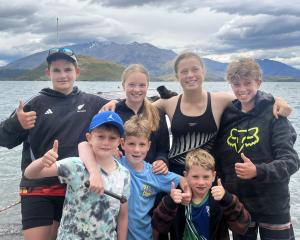
Harris Mountain Heli-Ski manager Hugh Barnard said the incident demonstrated there was "always a risk" in back-country skiing and that even experienced people could misread the conditions.
"They were recreational skiers, not guided, but they were obviously quite experienced and the way they were conducting their back-country trip was appropriate.
It was "the most important thing that the people who were part of the party followed all the right protocols and it was a very efficient and very professional rescue".
According to the NZ Mountain Safety Council (MSC), the party of five individuals had been travelling in a back-country area known as the "Commitment Chutes", when one person was buried by an avalanche.
The group, who were trained in avalanche rescue techniques, managed to extricate the victim within seven minutes, preventing any injuries.
The incident was the second human-triggered avalanche to impact the southern lakes in recent days, prompting the MSC to issue its own warning to back-country enthusiasts in the area.
"We’re urging back-country skiers, snowboarders and climbers to exercise extreme caution and to monitor the avalanche and weather forecasts closely", MSC chief executive Mike Daisley said.
As of yesterday, the NZ Avalanche Advisory, operated by the MSC, was forecasting a "considerable" avalanche danger for the Wānaka region.
Wānaka Mountain Guides chief guide Tim Steward said it was "not uncommon" to have guided groups in similar back-country areas any day of the season.
"Even when the public advisory is considerable it’s quite normal for all the heliski operators, the guiding operators, to be mitigating that risk by avoiding the avalanche-prone areas."
Mr Daisley said it was crucial anyone heading into the back country had the necessary training and skills to assess and manage avalanche risks and carried "the appropriate rescue gear, including an avalanche transceiver, shovel and probe".












